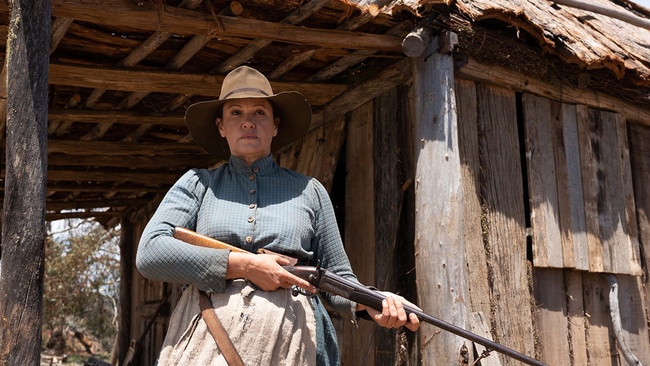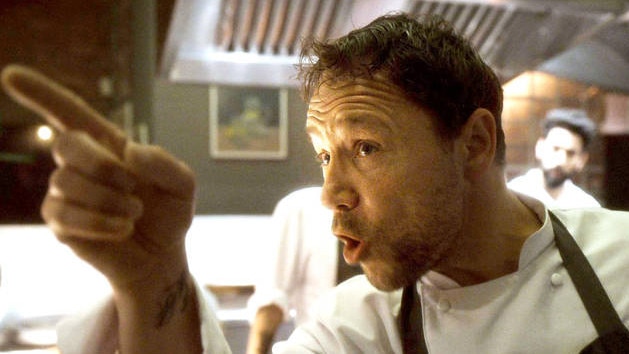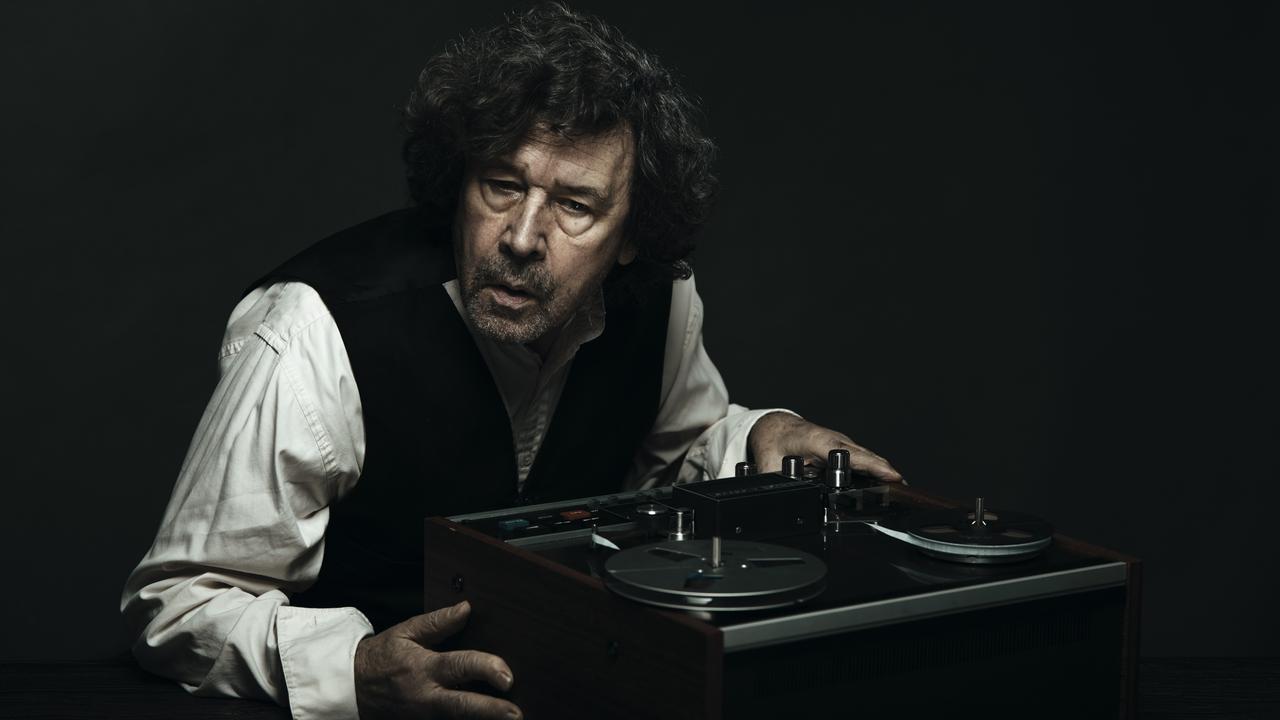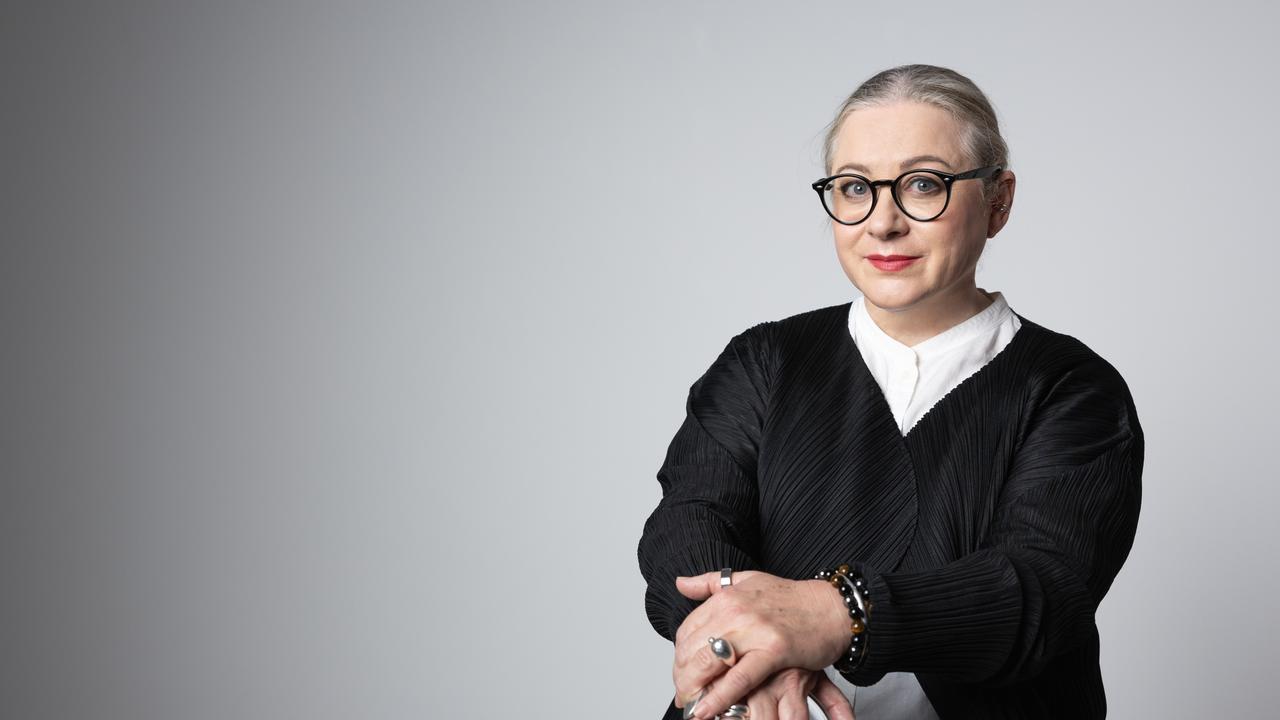Leah Purcell’s The Drover’s Wife an instant classic
Leah Purcell has reconfigured a Henry Lawson story into a multi-award winning play, then a novel and now a spellbinding, gut-wrenching movie.

The Drover’s Wife: The Legend of Molly Johnson (MA15+)
In cinemas
★★★★½
Wow, Leah Purcell, wow. With The Drover’s Wife: The Legend of Molly Johnson, you have made an instant classic in Australian film.
You reconfigured a Henry Lawson story into a multi-award winning play, then a novel and now a spellbinding, gut-wrenching movie.
You owe the great bush bard a debt and he owes you an even larger one. Everyone should see this film.
If film reviews were limited to 100 words or so, that is what I would say about this 109-minute colonial drama written, directed by and starring the Queensland-born Indigenous writer, actor and filmmaker.
But as I have more than 100 words, let’s go to a quote that situates the woman at the centre of the movie, mother-of-four Molly Johnson (Purcell).
“Cross me and I’ll shoot you where you stand and I’ll bury you where you fall,’’ she, levelling a rifle, tells a man who has come onto her land near the Snowy Mountains.
That line could come from a John Wayne movie. Yet it’s the line before it that matters. “I’m just a drover’s wife.”
That she is, but she is also so much more, for better and for worse. This film, with its undercurrents of colonial power, racism and sexism, is as relevant today as it would have been at the time of its late 19th-century setting.
Molly (the wife is unnamed in Lawson’s 1892 story) has a complex backstory that is hinted at in the opening scene, which, like the entire film, is beautifully shot by cinematographer Mark Wareham.
Indeed Wareham’s precise yet expansive filming highlights one advantage film has over the stage and page. Seeing the play or reading the book, we can imagine the landscapes, but here we see them in all their stark, unforgiving splendour.
In that opening scene, Molly and her four young children are at their primitive homestead and hear something – man or beast? – grunting and growling and coming closer. Molly, who is heavily pregnant, goes inside, gets her gun and returns outside.
A bullock appears. Her eldest son, 12-year-old Danny (a brilliant debut from Malachi Dower-Roberts), hiding in the house, looking through the window, tells her to shoot it.
She does and a brief flashback or hallucination or dream makes us wonder if this is not the first time her son has asked her to pull the trigger on a threat to the family.
Molly’s husband, Joe, has been away for three months, droving sheep in the high country. Or so we are told. There is a brutal murder – wife and children – at a rich man’s home in the nearest established town. The suspect is an Indigenous man.
Soon after, an Indigenous man with a shackle around his neck turns up at Molly’s place. His name is Yadaka (Rob Collins, also brilliant) and he, too, has a complicated backstory.
When he first speaks, Molly says, directly but neutrally, “An educated black … a danger in itself”. His response is even more direct, less neutral and true to the time. “My crime, missus? Existing while black.”
The new police sergeant, Nate Klintoff (Sam Reid), a Boer War veteran transplanted from London and making a new life in rural Australia with his feminist writer wife Louisa (Jessica De Gouw), must find the killer.
Purcell is outstanding. We can see on Molly’s face the life she has lived, as well as hints to another life, one she keeps hidden. The supporting characters, all terrific, include a man of the cloth (Bruce Spence), a judge (Nicholas Hope) and one of Joe’s off-the-rails droving mates (Harry Greenwood).
This is a dark Australian western that moves to a brutal conclusion, with small brutalities along the way. Scene after scene will make you catch your breath.
I particularly like that none of this is squibbed. As I watched there were moments where I feared a Hollywood outcome. That does not happen. It all feels true to life as it was.
The overwhelming question, facing Molly and the viewers, is how far will you go to protect your children?
There’s a snake in the wood pile at the outset of Lawson’s story. We see no reptile in this film, but that does not mean it is not full of snakes.
When Molly sends Danny to town to barter some of that now dismembered bullock, she tells him to trade it for flour, sugar, tea “and bullets … we’re low”.
Yet there are small moments of hope, as there needs to be. Towards the end another semi-dream scene blends the past and the future, I think, and it suggests the world can be a better place for everyone if we allow it to be.
-
Boiling Point (MA15+)
Amazon Prime, Apple TV, Fetch, Google Play
★★★½
What is your favourite tracking shot? I’m sure a lot of votes will go, and rightly so, to the three-minute opening scene in Martin Scorsese’s Goodfellas (1990), which sees Henry (Ray Liotta) and Karen (Lorraine Bracco) skip the queue at the Copacabana nightclub and go inside to meet some fellas who are not so good.
Orson Welles did a mesmerising one, involving a car bomb and Henry Mancini’s music, in Touch of Evil (1958). Stanley Kubrick loved them, and the one following Danny on his trike on The Shining (1980) is heart-in-the-mouth good.
A personal favourite is the 17-minute jailhouse conversation between IRA hunger striker Bobby Sands (Michael Fassbender) and a priest (Liam Cunningham) in Steve McQueen’s debut Hunger (2008).
Movie-making technique came to mind as I watched the fine British drama Boiling Point, as it is a rare beast indeed: a one-take film.
There’s a fascinating and illuminating online interview with the director, Philip Barantini, at thebookofman.com/mind/culture/boiling-point/
He first planned to shoot the 90-minute movie, set in an upmarket London restaurant, eight times over four days. In other words, make two films each day and choose one of them for release.
The cast, headed by the remarkable, ever-reliable Stephen Graham, so good in the recent miniseries The North Water, rehearsed for three weeks beforehand.
However Covid intervened and the director and cinematographer Matthew Lewis only had time to do four takes. The one we see is the third of them. A note to the studio/distributor powers-that-be: it would be fascinating to be able to watch each of the four 90-minute films on a DVD or via digital release to see the differences.
A one-shot film must put huge pressure on the actors. You can’t fluff your lines, hit the pause button and redo them. You can’t cut and stitch the editing room. I suppose it’s a bit like filming a play: what you see is what you get.
The director and co-writer, an actor for 25 years, says he put the dialogue in bullet points and let the actors improvise. Graham has described the experience as the “most zen” moment of his career.
So, technically speaking, Boiling Point is a bold film. One of the best-known one-take movies is Russian Ark (2002), which I am yet to see. David Stratton tells me it is, quote, “amazing”.
Alfred Hitchcock’s Rope (1948), based on a play, is a fake one-take. The great director himself called it a “stunt”. He made it look like one shot, but the tech available at the time - a spool of film lasted for 10 minutes - made it impossible.
Alejandro G. Inarritu’s Oscar-winning Birdman (2014) is a more recent example of a movie that is not a one-take being made to look like one.
As well as being bold, Boiling Point is a good movie. It is set over one night in Jones & Sons, an expensive London restaurant at which Andy Jones (Graham) is head chef.
We meet him heading into the eatery, running late, talking on his phone. The strong impression is he is having domestic troubles. He has a young son.
It’s a Friday night in the Christmas period, which means it’s as busy as it can be. More than 100 people have bookings, including a young man who has told the restaurant he will be proposing to his girlfriend, a TV celebrity chef, Alastair Syke (a wonderfully louche Jason Flemyng), who used to work with Andy, and who turns up with a feared food critic, a patriarchal sort who twice mentions his £200 bottle of wine and a group of 20-something male social media influencers who think they own the world.
It’s hard work in the kitchen, especially when the Instagram idols, phones recording and posting everything, demand something not on the menu.
However, the real tension is between the kitchen staff and the front of house.
“They don’t know what the f..k they are doing out there,’’ says assistant chef Carl (an excellent Vinette Robinson).
As the night unfolds there’s a feeling that chaos is around the corner. The director, like a lot of actors, earned a second income in another job, in his case as a chef, so he knows the souffle-like atmosphere. Is it a good idea to scrawl on a scrap of paper that one diner has a nut allergy and hand this note in to the kitchen, rather than log it into the ordering system?
Is it possible that the water bottle the head chef regularly swigs from contains other ingredients?
Is the celebrity chef there for reasons other than his passive-aggressive friendship with the head chef? (The title, by the way, is pinched from a Gordon Ramsay TV show).
The cast is terrific and the drama of this one night, shot from beginning to end, far exceeds anything on the likes of MasterChef.
To return to tracking shots, this one-shot movie has a few, including a gripping one right at the end that shows there is a boiling point and then there is a place beyond that.




